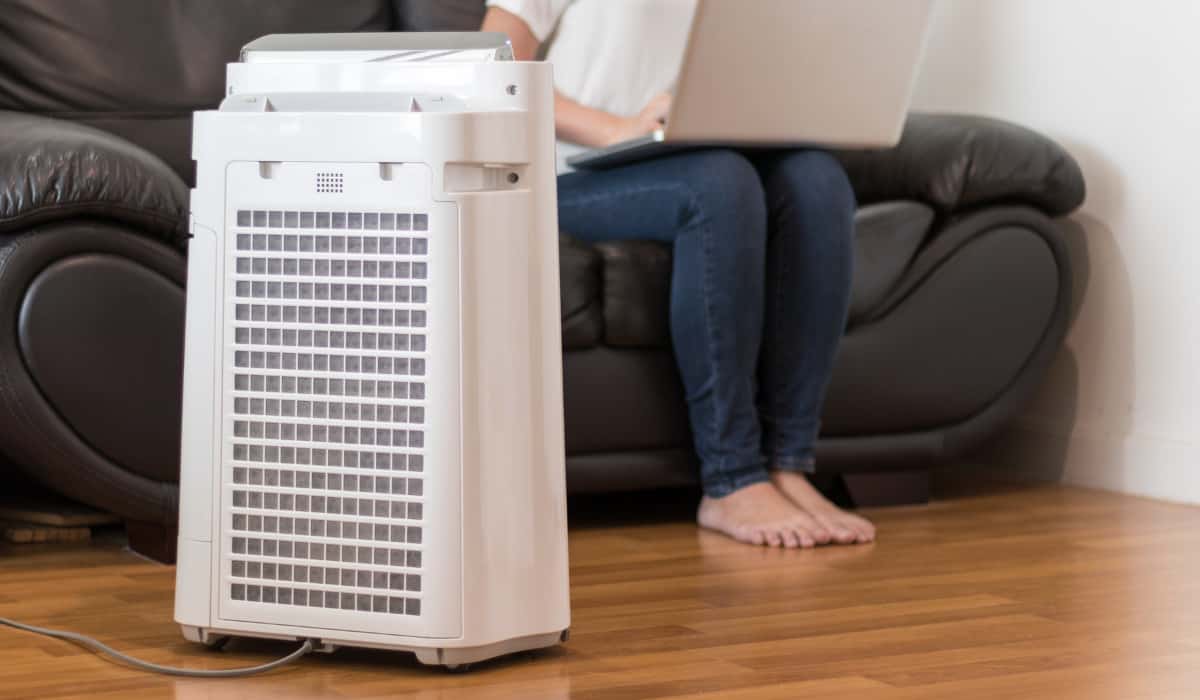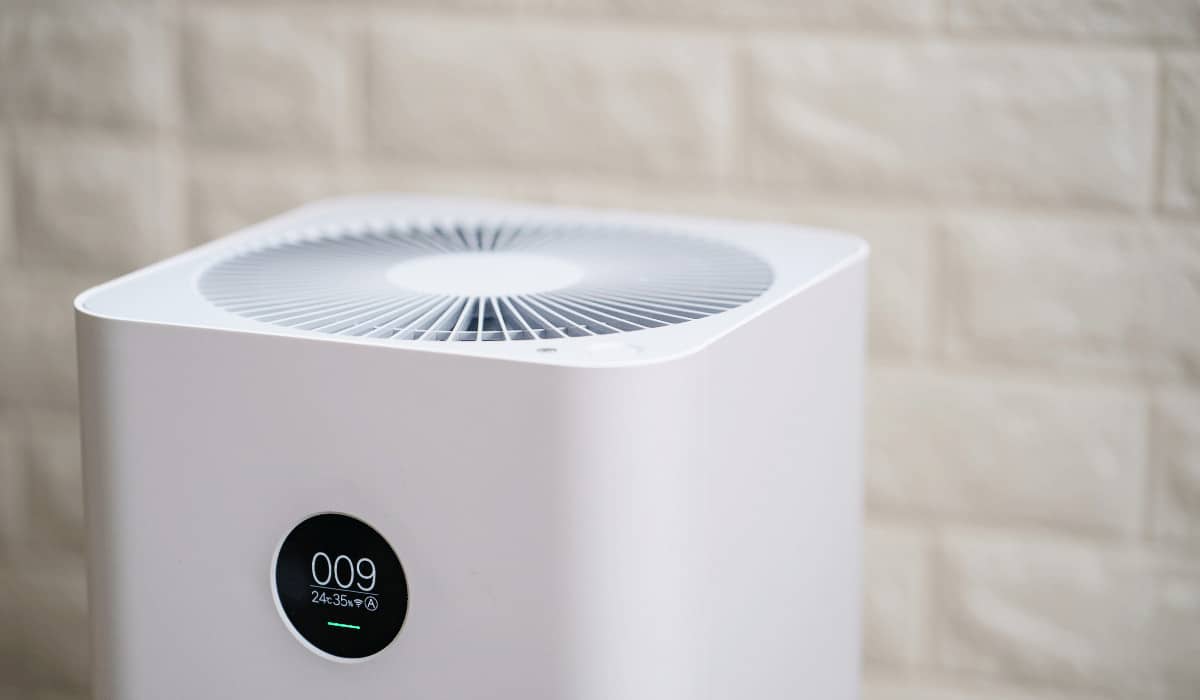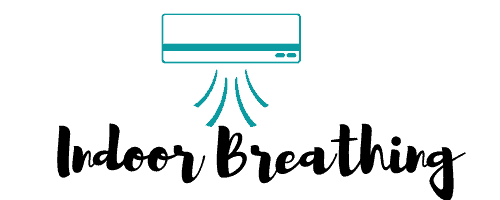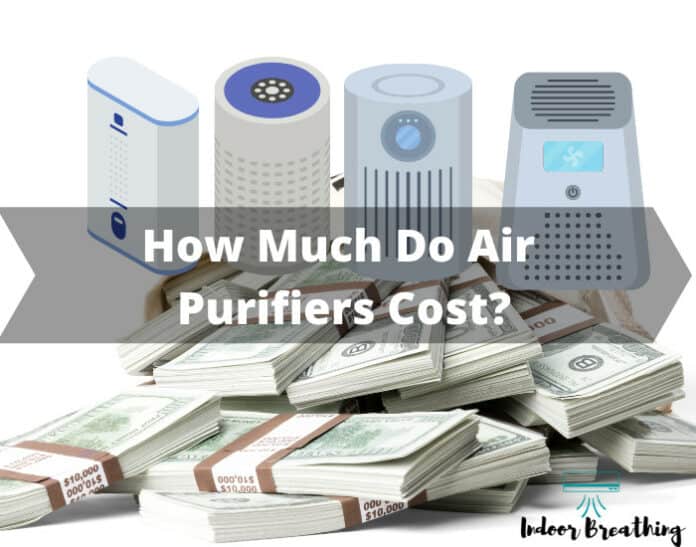Air purifiers are not considered to be necessities in your households as yet. Some families do have them, but most don’t. You might see them in commercial facilities, but they will become a part of our homes.
There are hundreds of units available, claiming to be the best performance. But how do you know which one to go for? A significant issue associated with these air purifiers is their cost.
It’s essential to address the common misconception that expensive air purifiers equate to higher air quality. While price can be an indicator of quality to some extent, it doesn’t guarantee optimal performance. Factors such as the type of filtration system, room size coverage, and specific pollutant removal capabilities play a more significant role in determining effectiveness.
When considering the cost of an air purifier, it’s essential to weigh it against the potential health benefits and long-term savings. Improved indoor air quality can lead to fewer respiratory issues, allergies, and overall better health outcomes, potentially reducing medical expenses in the long run.
Additionally, the ongoing maintenance costs of air purifiers should be factored in. Filters need to be replaced regularly to maintain effectiveness, adding to the overall cost of ownership. Some models may also consume more electricity than others, impacting utility bills.
Does an expensive air purifier guarantee quality air? How much do you have to pay for it?
Table of Contents
How Much Should You Pay to Breathe Well?
Air purifiers are still relatively new as consumers don’t have much objective information. Even if they are present in laboratories, medical centers, and hotels, they are still not quite the staple in today’s supermarkets.
However, these units are already becoming a regular part of households in the US.
Air purifiers clean the air around you and make it easier to breathe clean and fresh air. They are quite handy for people who have breathing problems or allergies.
But one of the reasons why these units are not becoming quite a trend is that people don’t know how much they need to spend on them.
Budget-Friendly Options: For those on a tight budget, there are plenty of affordable air purifiers on the market that offer basic filtration capabilities. These entry-level models typically utilize HEPA filters or similar technology to remove common airborne contaminants such as dust, pollen, and pet dander. While they may lack some of the bells and whistles found in more expensive models, they can still provide noticeable improvements in air quality, especially in smaller rooms or apartments.
Mid-Range Models: Mid-range air purifiers offer a balance of performance and affordability, making them a popular choice for many consumers. These units often feature more advanced filtration systems, such as activated carbon filters or UV-C light sterilization, which can effectively capture a wider range of pollutants, including smoke, odors, and airborne pathogens. While they may come with a slightly higher price tag, the added features and improved performance may be worth the investment for those seeking cleaner, healthier air throughout their home.
High-End Options: At the top end of the spectrum are premium air purifiers equipped with state-of-the-art technology and advanced features. These top-of-the-line models boast multiple filtration stages, smart sensors, and customizable settings to tailor the purification process to your specific needs. While they represent a significant investment upfront, they offer unparalleled performance and peace of mind for those who prioritize air quality above all else
So, the question is simple; how much should you spend to breathe wholesome air around the house? And in today’s post, we will explore this in detail.
Scroll down to read further.
Is an Expensive Air Purifier Truly Efficient?
So, what’s the actual cost of an air purifier? You can even ask around for a check, and most people won’t be able to give you a clear answer to that. However, cheaper options are available, and they sound pretty attractive with their price tag.
But the thing is, they are not as effective in providing quality air. But you can still get at least one purification function in such a unit.
Cheaper units range from around $50 to $70. So you can expect that a $125 unit will come with at least one HEPA filter, which will only cover a small area. Using such a unit to cover a large area will not work, and its filter will quickly become saturated.
On the other hand, a larger unit covering larger areas will have more than one filter. As a result, its filters will not become saturated as quickly as in the case of cheaper units.
One key advantage of investing in a premium air purifier is the ability to customize its filtration capabilities to suit your specific needs. Many top-tier models offer interchangeable filters that target different types of pollutants, from allergens and dust to volatile organic compounds (VOCs) and odors. This versatility allows you to tailor your air purification system to address the unique challenges of your environment, whether you’re dealing with seasonal allergies or lingering cooking odors.
Another factor to consider is the energy efficiency of the air purifier. While cheaper models may seem like a bargain upfront, they often consume more energy to operate, leading to higher long-term costs. In contrast, pricier units are often designed with energy-efficient features that help minimize electricity consumption without sacrificing performance. Over time, these energy savings can offset the initial investment and contribute to lower overall operating costs.
But the cost will double and even triple in some cases. And it automatically becomes more powerful to work in smaller areas.
| Available | On | Amazon | ||
|---|---|---|---|---|
| Add To Cart |  | AIRDOCTOR | PrimeEligible | |
| Add To Cart |  | Kazravan Enterprises LLC | PrimeEligible | |
| Add To Cart |  | Afloia | PrimeEligible | |
| Add To Cart |  | Kazravan Enterprises LLC | PrimeEligible | |
| Add To Cart |  | Elevate Your Home | PrimeEligible |
Be Wary of Those Low-Cost Air Purifiers

You have to be cautious of those low-cost units. But when going for an expensive unit, you also have to consider the cost associated with replacement filters. These replacement costs can increase your annual bill quite significantly.
Expensive units have more filters and filtering technologies in them. That is why they are expensive in the first place. With more filtering technologies, these units become more powerful. But it also increases their replacement costs.
Some units even come with eight filters to ensure you get cleaner and healthier air to breathe for longer. But replacement costs of such filters also increase, though you won’t have to deal with replacements often because eight filters don’t wear out quickly.
In comparison, you also need to be careful with those cheap air purifiers that claim to eradicate pollutants. Instead, they will release nocive gasses into your home. And they won’t be as effective in removing those allergens and dust particles from the air surrounding you.
In contrast, high-quality air purifiers may come with a higher price tag, but they offer a range of benefits that justify the investment. These units often feature multiple filters and advanced filtration technologies designed to effectively capture a wide range of pollutants, including airborne particles, bacteria, and odors. While the initial cost may be higher, the long-term benefits to your health and well-being outweigh the expense.
Additionally, reputable air purifier brands typically prioritize safety and compliance with industry standards, ensuring that their products do not emit harmful substances into the air. By investing in a quality air purifier from a trusted manufacturer, you can rest assured that you’re not only improving your indoor air quality but also safeguarding your health.
You have to go for the units that don’t produce ozone, ultrasound emissions, or other volatile compounds which damage your health.
The price of an air purifier is justified by everything good it can do to your health. Hence, going for those cheaper units is always a bad choice in the long run, both in terms of health and finance.
Are Cheap Air Purifiers That Bad?
Without a doubt, quality comes with a price. Similar is the case with appliances, and air purifiers are no different. So, you might be unable to find a quality or highly efficient air purifier that will cost you around $150.
These units are only partially effective, and you will need additional apparatus to make the unit work properly and for a longer period.
With a cheaper unit, you can only cleanse a small area, which will only be helpful for a single room. But you will have to keep the doors and windows closed. It’s just as if you are plastering a pierced dam. It will only work momentarily, but it’s a complete fail in the long run.
Wherever you air your house, your unit will have to start again. Cheap units already have a limited filtering capacity, to begin with. So, they are only effective when they are covering a smaller area.
The Value for Money With Quality Units

Initially, you will have to pay more for an expensive unit. This is because the price can be significantly higher than the cheaper alternatives. But these costly units provide you with value for money as well.
Cheaper units might be good for your pocket, but they are ineffective performance. This is because they cannot cover a larger area, and you are only limited to using them in a single small room.
You will also have to replace their filters more frequently, and they won’t be as effective in cleansing the air you breathe. So you are already compromising your health to save a few dollars.
On the other hand, going for an expensive unit is better. You might pay more upfront but get top-notch performance as a reward. These units come with multiple filters. They are potent with more filters, and you don’t have to replace their filters as often.
These units can cover a larger area with more filters, and their filters don’t get saturated quickly. Besides that, they also come with a range of other features. For example, most of them come with automatic shut-off features.
They can sense when the air quality is good and automatically shut down and turn on when needed. As a result, they can save energy and increase their lifespan to a good extent.
These units also feature automatic sensors to assess the air quality and switch between different functions to provide you with the best quality air to breathe in. These units can let you know the current room temperature and humidity levels.
Such a unit efficiently becomes your assistant in treating air quality, and you don’t have to worry about this aspect. These are only some of the features you get by going with the utility units.
Cheap units may seem like a bargain at first glance, but their performance often falls short. Limited in their capacity, they can only effectively cover small areas, relegating them to single-room use. Additionally, these budget options require frequent filter replacements and lack the efficacy to thoroughly cleanse the air you breathe. In essence, by opting for a cheaper unit, you may be compromising your health to save a few dollars.
On the other hand, premium air purification units offer top-notch performance as a reward for your investment. Equipped with multiple filters, they boast superior potency and longevity, sparing you the hassle of frequent filter replacements. With the ability to cover larger areas effectively, these units ensure comprehensive air purification throughout your living space.
Moreover, premium units come packed with a plethora of advanced features that elevate your air purification experience. Automatic shut-off functionality allows the unit to conserve energy and extend its lifespan by intelligently detecting and responding to fluctuations in air quality. Additionally, built-in sensors assess air quality in real-time, enabling the unit to adjust its operation to maintain optimal conditions. From monitoring room temperature to regulating humidity levels, these units serve as invaluable assistants in safeguarding air quality, leaving you free from worry.
Expensive units are much better build-wise, and their lifespan is much longer. Therefore, they will continue to serve you for a long time, reducing your maintenance costs significantly.
Cost of Filters
There are air purifiers without filter costs but let’s be real here. The best air purifiers are those with filters. And if an air purifier has a filter, you will have to clean it (if possible) or replace it.
Don’t only look at the price; see the filter’s life. And don’t trust manufacturers. They usually add several months extra, similar to car sellers’ state fuel consumption.
For example, air purifiers for general air quality – Fellowes AeraMax 200 and Winix P300. They both have carbon pre-filters and True-HEPA filters. But filters cost per year is $46 versus $70.
- Allergy air purifiers filters cost example.
IQAir HealthPro Plus and Alen Breathesmart.
Both can cover more than 1100 square feet of large spaces. Both are of excellent quality and are powerful. We calculated filter costs per year.
IQAir HealthPro Plus filters cost between $145 – $270 (depends on your indoor air quality – how often you will replace them)
Alen Breathesmart filters cost between $59 and $109 (depending on the filter model you choose – HEPA-pure, HEPA-silver, HEPA-OdorCell, or HEPA-FreshPlus filter).
You can see that even with the most expensive Alen filter, you pay much less than IQAir.
Energy Consumption
Energy used by an air purifier is another important thing you must consider. You have to remember a few things – air cleaner energy usage (watts), how regularly it will work, and how many fans speeds it has.
1. Watts:
One of the primary indicators of an air purifier’s energy consumption is its wattage. This information is typically found in the user manual or on the appliance itself. Understanding the wattage of an air purifier allows consumers to gauge its power consumption accurately. Higher wattage generally indicates greater energy usage, while lower wattage models consume less power.
2. Work Time:
A common misconception is that running an air purifier for a short duration, such as an hour, is sufficient to maintain clean indoor air. While it may effectively reduce pollutants during that time, airborne particles continuously circulate, necessitating prolonged operation for consistent air quality. Typically, air purifiers are recommended to run for 8 to 10 hours daily to maintain optimal indoor air cleanliness.
3. Importance of Fan Speeds:
Fan speeds play a pivotal role in both the efficiency of air purification and energy consumption. Air purifiers often come with multiple fan speed settings, each affecting the device’s performance and energy usage differently. For instance, operating an air purifier at its highest fan speed ensures rapid air purification but consumes more energy. Conversely, lower fan speeds may clean the air more gradually but at a reduced energy cost.
Balancing Efficiency and Energy Usage:
Achieving the right balance between efficient air purification and minimal energy consumption is essential for consumers. While higher fan speeds may offer quicker results, they can lead to increased electricity bills over time. On the other hand, lower fan speeds may save energy but require longer operation periods to achieve the same level of air purity.
Selecting an Energy-Efficient Air Purifier:
When shopping for an air purifier, look for Energy Star-certified models, which meet strict energy efficiency guidelines set by the Environmental Protection Agency (EPA). Additionally, consider features such as programmable timers and sensors that adjust fan speed based on air quality, optimizing energy usage without compromising performance.
I like examples, so let’s look at the top 5 best allergy air purifiers’ energy consumption and how much they will cost.
They all are powerful, so to keep it simple, they work 365 days a year, 8 hours per day. 1 kilowatt-hour (kWh) cost 12 cents.
IQAir HealthPro Plus consumes 215W max. That’s $6.28 per month, $75.38 per year.
Alen Breathesmart consumes 105W max. That’s $3.06 per month, $36.81 per year.
Whirlpool Whispure 510 consumes 39W max. That’s $1.13 per month, $13.67 per year.
Blueair 403 consumes 120W max. That’s $3.50 per month, $42.07 per year.
You can easily calculate how much your air purifier will cost—multiply kilowatts by 1 kilowatt-hour (kWh) cost with days.
For example, The air purifier consumes 200kW. Cost = 0,200 x 0,12 x 8 (hours per day) x 30 (days) = $5,76 per month.
Final Word
Air purifiers provide clean air to breathe throughout your home or office. Healthy air is essential to healthy living, and it becomes even more critical if someone around you has asthma or allergic problems.
Cheaper units can deliver results but only for a limited period. You will also have to compromise on the air quality you are getting, and you will have to deal with much higher maintenance costs.
You will have to pay more upfront for quality units, but you will get your money’s worth. These units are much more powerful and come with more features to make your life easier.
It’s better to go for an expensive unit and pay upfront than jeopardize your health with a cheaper unit in the long run. Of course, quality comes with a price, but you also get durability and value for money in return.
While cheaper air purifiers may seem like a tempting option initially, they often come with drawbacks that compromise long-term effectiveness and cost-efficiency. These budget-friendly units may deliver results for a limited time, but they typically lack the power and features necessary to maintain optimal air quality over the long haul. Additionally, their lower quality construction often translates to higher maintenance costs, ultimately negating any initial savings.
In contrast, investing in a high-quality air purifier may require a larger upfront expenditure, but the benefits far outweigh the initial cost. Premium units boast superior performance, effectively removing a wider range of contaminants and providing consistent air purification. Furthermore, they often come equipped with advanced features that enhance convenience and ease of use, such as programmable settings and smart technology integration.
When weighing the decision between a cheaper unit and a quality air purifier, it’s essential to consider the long-term implications for your health and finances. Opting for a cheaper alternative may seem economical initially, but the potential risks to your health and the added expenses of frequent maintenance can quickly outweigh any savings. On the other hand, investing in a top-tier air purifier ensures not only cleaner air but also durability and long-lasting value for your money.
I am here to make your decision easier and determine which air purifiers do the job best. Feel free to read my air purifier buying guide and check air purifier reviews.
| Available | On | Amazon | ||
|---|---|---|---|---|
| Add To Cart |  | MORENTO | PrimeEligible | |
| Add To Cart |  | Kazravan Enterprises LLC | PrimeEligible | |
| Add To Cart |  | Coway | PrimeEligible | |
| Add To Cart |  | MOOKA | PrimeEligible |


